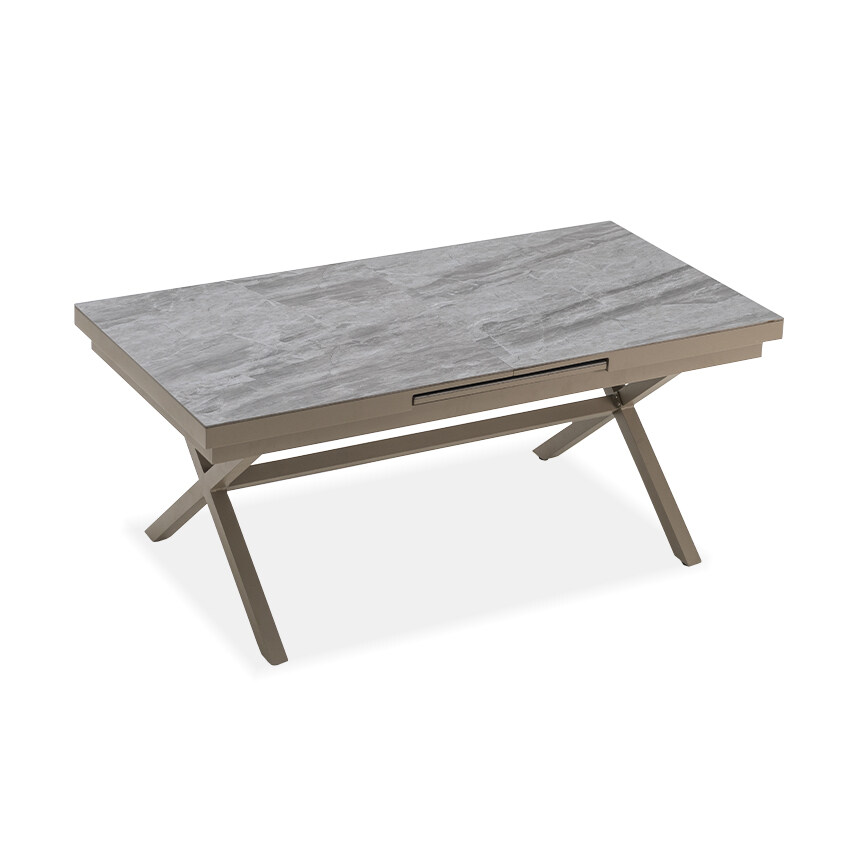Email format error
Email cannot be empty
Email already exists
6-20 characters(letters plus numbers only)
The password is inconsistent
Email format error
Email cannot be empty
Email does not exist
6-20 characters(letters plus numbers only)
The password is inconsistent


The allure of the sintered stone dining table lies not just in its aesthetic appeal but also in its intricate manufacturing process. Derived from a blend of natural minerals and particles, sintered stone undergoes a meticulous production method involving high-temperature sintering. This fusion process ensures a product that stands out for its compactness, durability, and resilience. In architectural and interior design circles, understanding this foundation is crucial. Such tables aren't mere furniture pieces; they are a testament to technological advancements melded with nature's offerings.
When homeowners, designers, or architects contemplate a sintered stone dining table, they're investing in longevity and aesthetic sophistication. The inherent properties of sintered stone confer upon it remarkable durability and strength. This robustness translates to a surface that resists scratches, dents, and the general wear and tear of daily use. Furthermore, the material's ability to withstand stains and high temperatures positions it as an unparalleled choice for dining spaces. Whether it's accidental spills during a dinner party or the heat from a freshly cooked dish, the sintered stone table remains unfazed, exuding elegance and functionality.
Beyond its functional attributes, the sintered stone table radiates a contemporary charm. Its uniformity in texture and finish offers a sleek, polished look, making it a centerpiece in modern interiors. The material's versatility allows designers to experiment with shapes, sizes, and designs, ensuring each piece is unique yet timeless.

To truly appreciate the sintered stone dining table's merits, juxtaposing it against other conventional materials like marble, quartz, granite, and wood is essential. While marble exudes a classic, luxurious appeal and wood resonates with warmth and organic charm, sintered stone carves a niche of its own. It seamlessly blends the best of both worlds: the durability akin to granite and the design versatility of marble.
However, no material is devoid of limitations. While sintered stone boasts a robustness that some natural stones might lack, it may occasionally miss the organic warmth that wood offers. Wooden tables, with their grains and patterns, provide a tactile and visual comfort that sintered stone, with its uniformity, might not replicate entirely. Yet, this is a matter of personal preference and the overarching design aesthetic.
Architects, interior designers, and homeowners worldwide are recognizing the myriad benefits of sintered stone. Its rise in popularity isn't merely a fleeting trend but a testament to its enduring appeal and functionality. For spaces demanding a contemporary touch without compromising on durability, the sintered stone dining table emerges as an obvious choice.
In an era where sustainability is paramount, the sintered stone dining table shines brightly. Its manufacturing process, characterized by minimal waste and efficient resource utilization, underscores its eco-friendly credentials. Unlike some materials that deplete natural resources or generate substantial waste during production, sintered stone strikes a balance between functionality and environmental responsibility.
Moreover, throughout its lifecycle, from production to installation and eventual disposal, sintered stone leaves a minimal carbon footprint. Its longevity ensures that replacements are infrequent, reducing the overall environmental impact associated with manufacturing and transportation.
As global conversations pivot towards sustainable living and responsible consumption, materials like sintered stone are at the forefront of innovation. They exemplify the potential to marry aesthetics, functionality, and sustainability, setting a precedent for future material innovations.
The sintered stone dining table, with its blend of technological innovation and natural aesthetics, epitomizes contemporary design excellence. Its manufacturing intricacies, unmatched performance characteristics, and sustainability credentials position it as a frontrunner in modern interior design choices. As design philosophies evolve and homeowners prioritize longevity, functionality, and sustainability, the sintered stone table stands poised to redefine spaces, one dining area at a time.